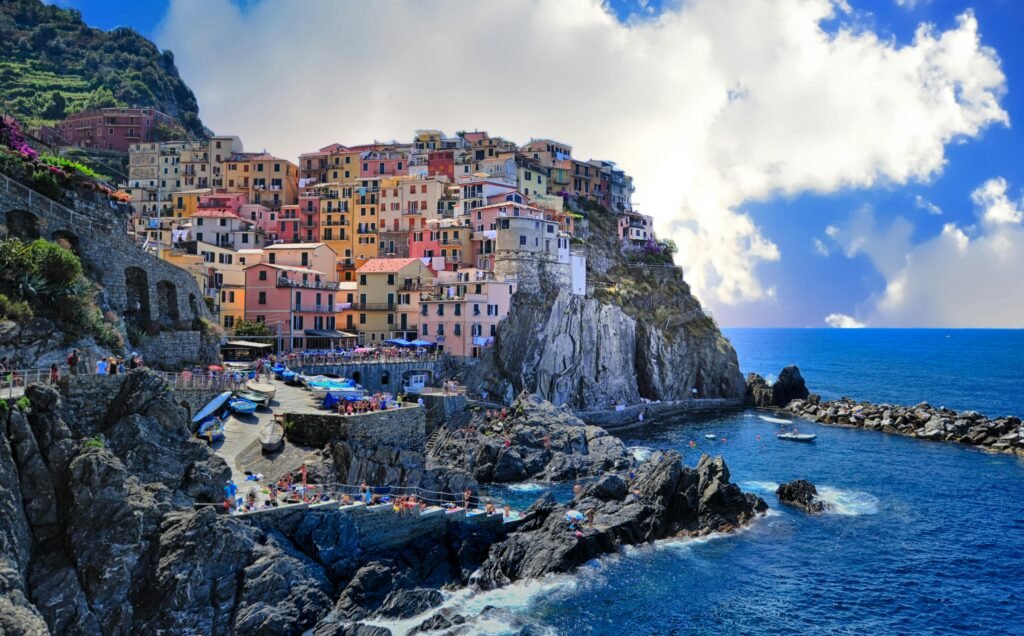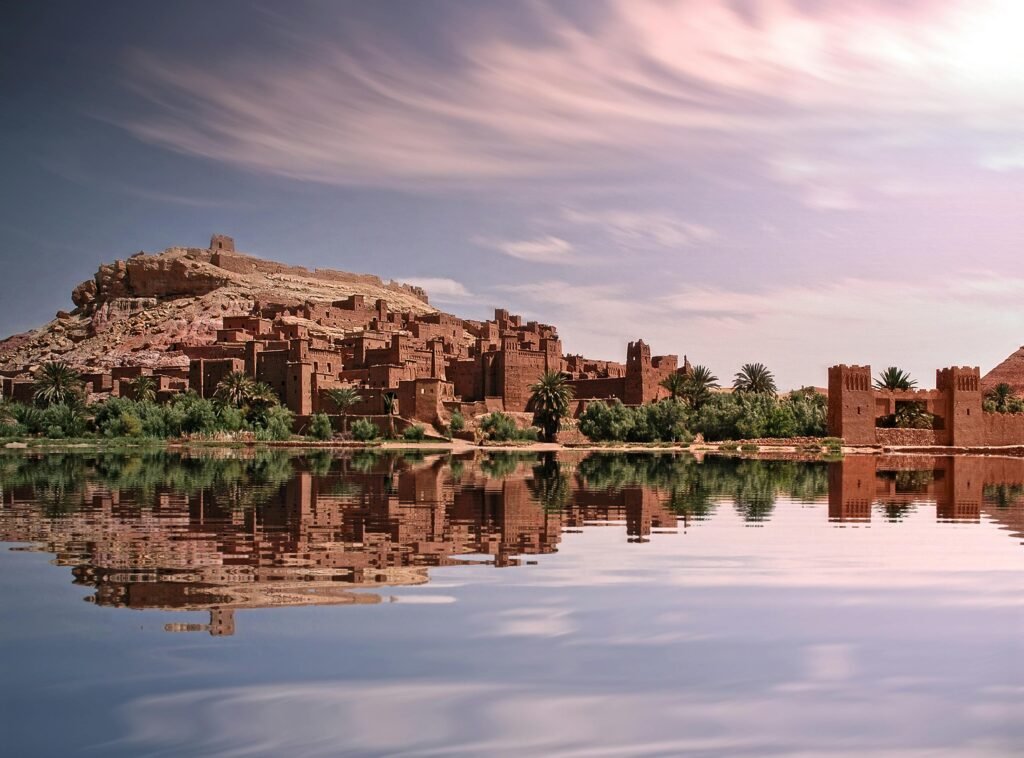Introduction to UNESCO World Heritage Sites
The United Nations Educational, Scientific and Cultural Organization (UNESCO) recognizes World Heritage Sites as places of outstanding cultural or natural importance to the common heritage of humanity. Established in 1972 through the World Heritage Convention, the overarching goal of these sites is to promote awareness and conservation of significant cultural and natural assets worldwide. UNESCO World Heritage Sites encompass various locations, such as monumental architecture, unique landscapes, and sites of historical significance, alongside natural reserves that maintain biodiversity or ecological processes.

The selection of UNESCO World Heritage Sites is based on ten criteria, which include exceptional human creativity, important exchanges in human history, and ongoing conservation of specific ecosystems. Sites must meet at least one of these criteria to be considered for inclusion on the list. Furthermore, selected sites are not solely judged on their aesthetic value; instead, they reflect the extraordinary universal value, illustrating the interplay between cultural and natural heritage. The rigorous nomination and evaluation process ensures that only the most deserving heritage areas receive recognition, thus emphasizing the importance of preserving these treasures for future generations.
Preserving UNESCO World Heritage Sites is vital for fostering global consciousness and promoting the significance of cultural heritage and natural conservation efforts. Not only do these sites offer a glimpse into the past, but they also serve as crucial resources for scientific research and educational purposes. As we explore underrated UNESCO sites, it becomes essential to acknowledge the pivotal role they play in protecting our collective heritage, advocating for sustainability, and inspiring future generations to appreciate the world’s diverse cultural and natural landscapes.
Why Underrated Sites Matter
Underrated UNESCO sites represent a treasure trove of cultural and historical significance that often goes unnoticed by mainstream tourism. These locations, while officially recognized for their universal value, frequently elude the attention of the larger traveling public, allowing for a uniquely enriching experience. One of the foremost advantages of visiting these less frequented sites is the opportunity to avoid the overwhelming crowds found at more popular destinations. This leads to a more intimate experience, allowing travelers to immerse themselves in the local culture and history without the distractions that often accompany larger tourist hotspots.

Furthermore, exploring underrated UNESCO sites provides insightful perspectives into the local way of life. Unlike popular tourist attractions that may present a polished version of a region, these hidden gems often remain authentic and reflective of the true culture. Visitors can engage more meaningfully with local traditions, rituals, and culinary delights, gaining a richer understanding of the community’s heritage and practices. Such interactions foster connections between travelers and locals, enriching the visit and allowing for shared learning experiences.
Additionally, by choosing to visit these overlooked sites, tourists play a crucial role in supporting local economies. Tourism is a significant economic driver in many regions, and lesser-known sites can benefit greatly from the influx of visitors. The revenue generated from ticket sales, guided tours, and local dining contributes to the sustainability of these sites and the livelihoods of residents. In this way, and as responsible travelers, we not only appreciate the beauty and significance of these places but also help preserve them for future generations.
In summary, underrated UNESCO sites offer distinctive advantages that extend beyond mere sightseeing, providing travelers with an opportunity to forge genuine connections and support local communities. By exploring these hidden gems, we can enhance our travel experiences while promoting cultural appreciation and economic development.
Criteria for Selection as a UNESCO Site
The designation of a site as a UNESCO World Heritage Site is a prestigious recognition that reflects not only its cultural and historical significance but also its outstanding universal value. The criteria established by UNESCO can be broadly categorized into four main groups: cultural, historical, scientific, and natural criteria. Each category provides a framework through which sites are assessed for their eligibility and significance on a global scale.
Cultural criteria often involve the evaluation of a site’s cultural heritage, expressed through architecture, art, and human interactions with the environment. For example, lesser-known sites like the ancient city of Caral in Peru illustrate the importance of early urban settlements and their contributions to civilization. This site demonstrates cultural criterion (i) for representing a masterpiece of human creative genius.
Historical criteria focus on sites associated with events, traditions, or significant figures that have influenced human history. The little-known site of the Rani-ki-Vav stepwell in India highlights the historical narrative of water conservation practices in arid regions, fulfilling the requirement of criterion (iv) for representing a significant stage in human history.
In terms of scientific criteria, sites that provide insight into the Earth’s geological history or remarkable ecosystems are given consideration. For instance, the unique biodiversity found in the Harar Jugol, the old walled city of Harar, invites the exploration of criterion (x) for outstanding examples of significant ongoing ecological and biological processes.
Furthermore, natural criteria focus on sites that possess outstanding natural phenomena or areas of exceptional natural beauty and aesthetic importance. Hidden gems such as the Tepui formations in Venezuela exemplify this by showcasing diverse ecosystems and geological formations. Understanding these criteria allows us to appreciate the characteristics that make these underrated UNESCO sites worthy of recognition
.
The Coffee Cultural Landscape of Colombia
The Coffee Cultural Landscape of Colombia is an exceptional region that embodies the rich history and vibrant culture associated with coffee production. Spanning over a vast area in the central highlands of Colombia, this UNESCO World Heritage site encompasses picturesque towns, lush coffee plantations, and breathtaking natural scenery. A blend of stunning mountains, rolling hills, and fertile valleys paints a vibrant picture of the area, making it an ideal destination for travelers seeking to experience the harmony of agriculture and nature.
Coffee has deep roots in Colombian history, with its cultivation fostering a unique cultural identity in the region. The landscapes of this area are not merely agricultural; they represent a unique way of life that has evolved over generations. Traditional farming methods are still prevalent, showcasing the ingenuity and dedication of local communities in developing sustainable practices that have remained unchanged for decades. Visitors can interact with coffee farmers, gaining insights into every step of the production process, from planting and harvesting to roasting.
The Coffee Cultural Landscape was inscribed as a UNESCO World Heritage site in 2011, in recognition of its cultural significance and the outstanding universal value it holds. This classification emphasizes its importance not only as a coffee-producing region but also as a living cultural landscape that demonstrates the intricate relationship between humans and their environment. The diversity of cultures, landscapes, and architectural styles found in towns such as Salento and Manizales make this destination intriguing for those interested in exploring lesser-known sites. Thus, traveling to the Coffee Cultural Landscape offers a rare glimpse into a fascinating aspect of Colombia’s heritage, allowing visitors to appreciate both its scenic beauty and cultural depth, far from the more conventional tourist routes.
The Tentative List – Ancient Villages in Southern Italy
Southern Italy is home to a collection of ancient villages that are steeped in history and culture, many of which are currently featured on UNESCO’s tentative list for World Heritage status. These villages offer a unique glimpse into the region’s past, showcasing architecturally rich structures and traditional lifestyles that have endured through centuries. Each village possesses its own distinct identity, characterized by intricate stonework, narrow alleys, and breathtaking landscapes that make them alluring destinations for travelers seeking an authentic experience.
Among these noteworthy villages, Matera stands out due to its historical significance. Renowned for its ancient cave dwellings known as “Sassi”, Matera highlights the early forms of human habitation that date back to prehistoric times. Visitors can explore the winding streets and delve into the fascinating history of this UNESCO World Heritage site, which provides insights into ancient cultural practices and communal living.

In addition to Matera, the village of Alberobello, famous for its trulli—whitewashed, cone-roofed houses—offers a picturesque landscape that transports visitors back in time. Walking through the cobblestone streets, tourists can appreciate the craftsmanship of these unique structures while enjoying the local cuisine and hospitality. Another charming village on the tentative list is Civita di Bagnoregio, perched on a hilltop and often referred to as “the dying town” due to its eroding landscape. Its dramatic views and tranquil atmosphere make it a perfect stop for those seeking solitude and natural beauty.
Travelers can partake in cultural activities, such as seasonal festivals, artisan workshops, and local food tastings, providing enriching experiences that connect them to the local way of life. The cultural significance of these ancient villages, underlined by their potential UNESCO status, showcases the importance of preserving human history and tradition for future generations. Visiting these locations not only uncovers hidden treasures but also encourages the safeguarding of their unique heritage.
The Etruscan Necropolises of Cerveteri and Tarquinia
The Etruscan Necropolises of Cerveteri and Tarquinia, located just north of Rome, are two of the most significant archaeological sites from the ancient Etruscan civilization, which flourished in Italy from the 8th to the 3rd century BCE. These sites not only offer a glimpse into the rich cultural heritage of the Etruscans but also highlight their remarkable artistic achievements. Recognized as a UNESCO World Heritage Site in 2004, the necropolises serve as vital reminders of a civilization that greatly influenced the early Romans.
The Necropolis of Cerveteri, known as Banditaccia, is distinguished by an extensive network of tombs that display a unique architectural style. Visitors can explore various types of sepulchers ranging from simple to more elaborate structures, showcasing intricate frescoes and diverse burial goods. The artistry found within these tombs reflects the Etruscans’ skilled craftsmanship and their beliefs concerning the afterlife. Similarly, the Tarquinia Necropolis presents an exceptional collection of tombs adorned with vivid frescoes that illustrate everyday life, mythology, and religious rituals of the Etruscans.
The Island of Gorée, Senegal
Gorée Island, located off the coast of Dakar, Senegal, is renowned for its profound historical significance. This small island served as a central hub for the transatlantic slave trade starting in the 15th century, making it a poignant symbol of the horrors of human trafficking. Despite its relatively small size, Gorée Island’s impact on history is monumental, as it is estimated that millions of enslaved Africans passed through its doors, forever altering the demographics and cultures of not only Africa but also the Americas.
The architecture of Gorée is a testament to its rich past, featuring colonial-era buildings that have been carefully preserved. One of the most notable sites is the House of Slaves (Maison des Esclaves), which houses exhibits detailing the experiences of those who were trafficked. Visitors can walk through its infamous “Door of No Return,” a harrowing reminder of the last physical connection enslaved individuals had to their homeland before being shipped across the ocean. This somber landmark encapsulates the bittersweet dual legacy of Gorée Island; it is a place of reflection and remembrance, alongside being a vibrant community inhabited by those who celebrate its unique cultural heritage.
Gorée Island also features a rich tapestry of art, music, and cuisine that reflects the fusion of African and European influences over centuries. The island’s annual celebrations attract many tourists and locals who engage with its vibrant cultural expressions, ensuring that its history is honored and its stories are shared. Although Gorée is often overshadowed by more recognized UNESCO sites, its significance as a center of the Atlantic slave trade makes it a crucial site for understanding African history and its enduring legacy. By visiting Gorée Island, one engages in a thought-provoking exploration of history while contributing to the ongoing dialogue surrounding cultural heritage and remembrance.
The Rani ki Vav (Queen’s Stepwell), India
Rani ki Vav, also known as the Queen’s Stepwell, is a remarkable architectural marvel located in Patan, Gujarat, India. Constructed during the 11th century by the Solanki dynasty, this stepwell was built in memory of Queen Udayamati and remains one of the most exquisite examples of ancient Indian engineering and architecture. Stepwells, in general, served the dual purpose of providing water and as a cool refuge from the heat, showcasing the ingenuity employed by ancient civilizations in arid regions.
The intricate design of Rani ki Vav highlights the skillful craftsmanship of its artisans. The stepwell features seven levels, lined with a series of beautifully carved pillars and sculptures that depict various deities from Hindu mythology. Each tier of the stepwell presents a visual narrative, enhancing the overall aesthetic appeal and providing insight into the spiritual beliefs of the time. The carvings are not only ornamental but also serve to illustrate the social and cultural values prevalent during the era of its construction.
Despite its historical significance and stunning design, Rani ki Vav remains relatively undiscovered by the mainstream tourist circuit compared to more famous Indian heritage sites. Its secluded nature adds to its charm, allowing visitors to explore the stepwell’s beauty in a tranquil setting. The UNESCO recognition in 2014 has garnered some attention, yet it still offers an opportunity to experience an exceptional cultural heritage without the usual crowds found at more popular destinations. The preservation of Rani ki Vav exemplifies the commitment to safeguarding India’s architectural history while allowing future generations to appreciate its grandeur.
The Ancient City of Corfu, Greece
The Ancient City of Corfu, located on the island of Corfu in Greece, is a UNESCO World Heritage Site that embodies a rich tapestry of history and culture. Renowned for its remarkable Venetian architecture, the city stands as a testament to the myriad influences that have shaped its evolution over centuries. The blend of styles, including Byzantine, Italian Renaissance, and French Empirical, reflects the city’s strategic significance and its complex past as a bustling Mediterranean port.
Visitors to Corfu are often captivated by the well-preserved fortifications, grand palaces, and lively squares that narrate stories of a time when the island was a vital outpost in the Venetian Empire. The Old Fortress, built during the 16th century, dominates the landscape, while the Liston Promenade, inspired by the Rue de Rivoli in Paris, presents a unique fusion of local and European architectural influences. These landmarks not only enhance the city’s aesthetic allure but also provide insight into its strategic role in naval warfare and trade.
Culturally, the Ancient City of Corfu is a melting pot of Greek, Venetian, and British influences, visible in local customs, cuisine, and festivals. This diversity enhances the city’s charm and invites visitors to explore its bustling markets, where they can sample local delicacies and experience the vibrant spirit of its residents. The blend of history and culture makes Corfu a unique destination for travelers seeking authenticity and depth.
Despite its undeniable allure, the Ancient City of Corfu remains relatively underrated compared to more popular Greek destinations. This obscurity makes it an appealing choice for those looking for a less crowded experience filled with adventure, history, and stunning scenery. The combination of its rich past and picturesque surroundings firmly establishes Corfu as a hidden gem within the UNESCO World Heritage pantheon.
Conclusion: Explore and Support Hidden Gems
As we delve further into the world of travel, it becomes increasingly evident that some of the most enriching experiences are often found off the beaten path. The underrated UNESCO sites highlighted in this post serve as reminders of the beauty and significance that lie beyond the more commonly visited destinations. By exploring these hidden gems, travelers not only uncover breathtaking landscapes and profound cultural experiences but also play a vital role in their preservation.
Visiting these lesser-known UNESCO sites allows individuals to engage more deeply with local communities. This engagement can lead to an authentic understanding of unique cultures, traditions, and histories, which are often overlooked in favor of more popular tourist attractions. Each site tells its own story, waiting to be discovered and appreciated, urging travelers to consider the depth of their experiences rather than simply the breadth.

Supporting these hidden gems can also stimulate local economies, both safeguarding the livelihoods of residents and promoting sustainable tourism practices. When travelers choose to visit and invest in these destinations, they contribute not only to the conservation of these historical and cultural treasures but also to the continuation of their narratives. As passionate travelers, encouraging friends and family to seek out these locations can amplify the impact of travel on preserving what makes our world diverse and remarkable.
In essence, the charm and importance of underrated UNESCO sites should not be underestimated. By venturing off the typical tourist routes, travelers can uncover fascinating stories, experience rich cultures, and contribute to the sustainability of the world’s heritage. So, pack your bags and embark on a journey to explore the hidden gems waiting to be discovered. Your adventures will not only enrich your spirit but also honor the legacy of these extraordinary places.



